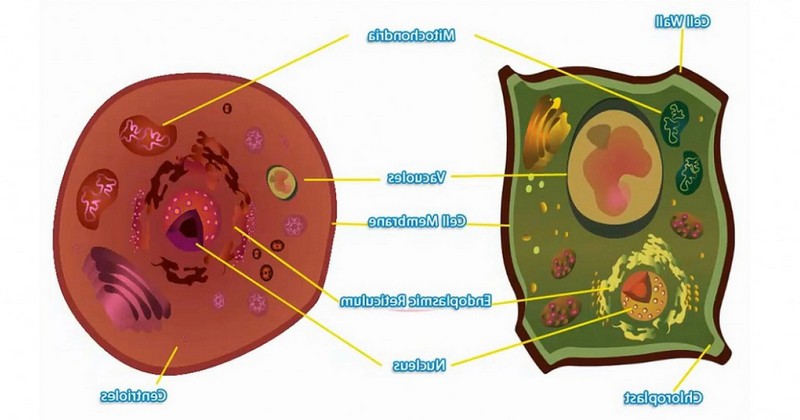The 4 differences between animal and plant cells

These microscopic bodies not only form very different tissues; they can also be differentiated.
All living things share the same basic unit, which is none other than the cell. From the smallest unicellular microorganisms to the most complex multicellular organisms, the cell is always present. But the fact that everything has the same unit does not mean that it is the same for all.
Animals and plants are the living beings that have the most complex type of interactions between cells; these microscopic bodies are organized to form specialized tissues and organs. But a plant is very different from an animal, and these differences are already apparent at the cellular level. In this article we will review the differences between the animal and plant cell.
Main differences between animal and plant cells
Both animal and plant cells are eukaryotic, i.e. their genetic content is isolated in a nucleus, which separates it from the rest.The nucleus, which separates it from the rest and has membranous organelles (complexes that carry out vital functions for this microscopic element). Despite this, there are specific characteristics that allow us to distinguish between plant and animal cells.
Some of these differences are so striking that in the field of histology (the study of tissues), a glance at a tissue sample under a microscope makes it possible to tell whether it comes from a plant or an animal, it is possible to tell whether it comes from a plant or an animal.. Let us see what they are
1. External structures
All cells have a membrane a membrane formed by two rows separating the inside from the outside. Having a second layer covering the cell is no longer so common, and here lies a difference between animal and plant cells. While the former do not have any secondary layer, plant cells do, the so-called cellulose cell wall. This rigid structure provides protection (as in bacteria) and offers sustainability to the tissues, because the wall acts as the foundation for cell organization.
Animal tissues also consist of networks of cells, although they lack the cell wall. Instead, however, they present the extracellular matrix, which is not observed in plant tissues. This space is formed by structural proteins, such as collagen, which provides a means to connect the cells together and give shape to the tissues. Despite their differences, the cell wall and the extracellular matrix share functions (structure support).
2. Cell division
A theme linked to the previous one and which offers differences between animal and plant cells is found in the process of cell division, whether it is a mitosis or a meiosis. At the moment of splitting the cell in two, the mechanism used is different.the mechanism used is different.
While in animal cells it is by strangulation of the cell membrane, in plant cells it is by the formation of a septum, which will be part of the future cell wall that will separate the two sister cells.
3. Organelles
The main characteristic of plants is their ability to obtain energy from sunlight, in other words, they can perform photosynthesis. This is made possible by the presence in plant cells of a unique organelle, known as the a unique organelle, known as the chloroplast.which is in charge of the photosynthesis process with the use of the pigment chlorophyll, responsible for the green color of the leaves of plants and some algae.
Having the cell wall has its advantages as well as disadvantages. Being isolated, the transit of particles in the cells is limited, although it is not so necessary because they carry out photosynthesis.i.e., they do not need an external food source. Animal cells, on the other hand, have no other way of obtaining energy than by capturing external substances through their membranes.
In order to assimilate products, cells carry out phagocytosis, a process that leads the cell membrane to generate a vacuole or vesicle with the particle inside and then transport this "package" inside to be digested. In a similar way to the stomach, it is necessary that the captured particle is broken down into smaller components to be absorbed, and for this it is necessary that enzymes (proteins with catalytic capacity) are added to digest the substance. These are transported in vesicles known as lysosomes, and so far they have not beenThey have not been observed so far in plant cells.
4. Cytoskeleton
The cytoskeleton is an important element of cells. It is a network of structural filamentous proteins that maintain the shape of the cell. that maintain the shape of the cell, transport organelles and vesicles through the cytosol (the cell's internal environment) and play an important role in cell division.
Although it is a common element, there are differences between animal and plant cells. In the former, forming part of the cytoskeleton, there is an organelle known as the is an organelle known as the centriole.. This cylinder-shaped structure is responsible for cell movement by means of cilia and flagella (filamentous structures of the membrane that allow them to propel themselves). Apparently, no centrioles have been found in plant cells, just as there are no motile cells (the cell wall prevents movement).
(Updated at Apr 13 / 2024)